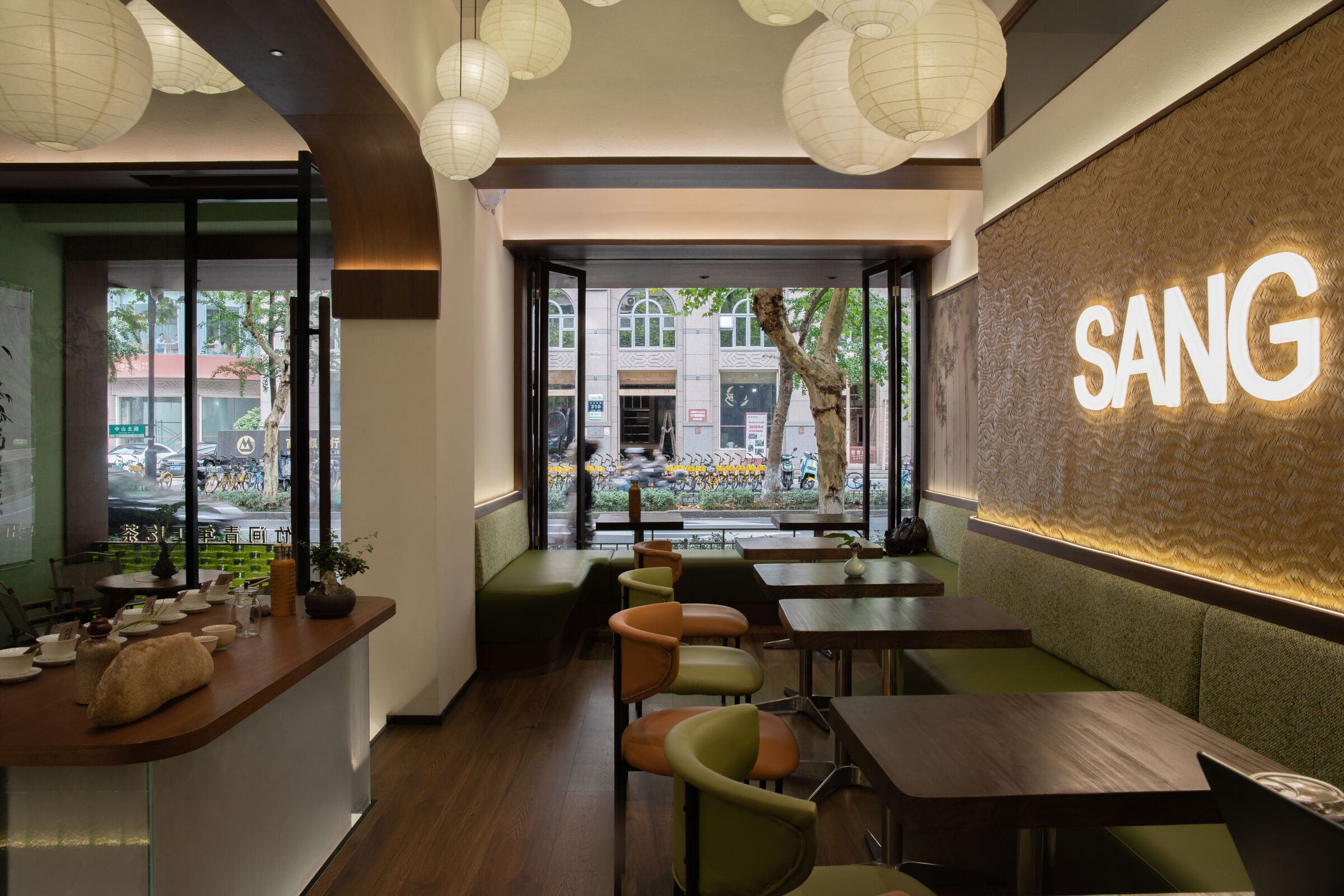Sang Tea 1.0 symbolized the birth of the brand, emerging from the natural landscape of the mountains, brimming with the energy of new life breaking through the earth. The unique natural surroundings blended harmoniously with the brand’s ethos. In creating the space and atmosphere for Sang Tea 1.0, we used vibrant green as the base, layering the space with greenery and constructing an environment full of light, air, and vitality.
Sang Tea 2.0 transitions from the mountains to the city, evolving from tea drinking in a natural setting to enjoying tea in an urban environment. This shift brings new elements into the brand’s narrative. Urban influences are seamlessly integrated, merging the tranquility of nature with the bustling energy of city streets, evoking a timeless, unhurried sense of life. The space itself has matured from the fresh, vibrant green of the mountains into a more subdued, sophisticated yellow-green, blending the authenticity of nature with the refined tone of urban leisure.
Located in Hangzhou’s old city district, Sang Tea 2.0, like its neighboring shops, occupies a space beneath an old residential building. To increase the store’s visibility in this context, we incorporated the brand’s key element—“bamboo”—into the design. On the 2-meter-high storefront, we used corrugated tempered glass, sandwiching ink-style bamboo paintings to create a soft, shadowy lightbox. This subtle bamboo silhouette forms the first impression and piques the curiosity of passersby.
The individual storefronts are narrow, a characteristic of the older residential architecture. Thick partition walls separate the spaces, and the two storefronts leased by the owner belong to different landlords. Merging these spaces presented various challenges. The landlords eventually required that the partition wall between the two stores could only be opened partially, with a 30 cm-high short wall left in the middle to allow for potential restoration. Additionally, side passages had to retain visible traces of their original state. In response, we designed an 850 mm-high product display table around the short wall, encasing it in tempered glass and adding lighting to create a clear focal point. This design extended to the boundaries of the side passages, where recessed floors covered with anti-slip glass and highlighted with lighting further defined the separate areas.
Every design choice contributes to the project’s story and vitality. Sang Tea 2.0’s current form is the result of both controlled and unforeseen elements, and the ability to embrace these evolving aspects requires designers to cultivate a deep, intuitive sense of space.
Despite the fact that about one-third of the space is occupied by the kitchen, limiting the area available for customer activities, we still managed to create a small outdoor seating area at the entrance. This not only adds layers to the spatial experience but also provides customers with a brief transitional moment before entering the store. The primary materials used continue the green glass bricks from Sang Tea 1.0, which evoke a sense of coolness and relaxation reminiscent of the mountains, while also integrating the vibrant energy of the city. Paper-wrapped spheres of varying sizes hang throughout the space, reflecting off glass and mirrored surfaces to create a dynamic sense of flowing time, much like the lingering fragrance of tea. The soft bamboo-covered walls, paired with the warm texture of woven bamboo, bridge the connection between urban life and nature. A small regret is that the original design for the bamboo weaving, intended to evoke a gently flowing water pattern with alternating yellow and green strips, did not achieve the desired effect due to insufficient contrast in the colors, leaving the result somewhat flat. Nonetheless, the overall space achieves a richness through its layered details, offering customers a subtle and refined sensory experience that creates lasting memories and ultimately forms a deep connection with the brand.


